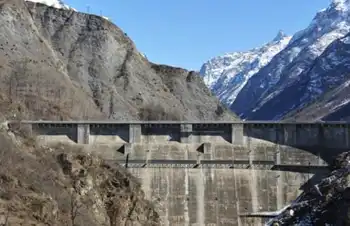3M ACCR again used to boost capacity
By Business Wire
NFPA 70b Training - Electrical Maintenance
Our customized live online or in‑person group training can be delivered to your staff at your location.

- Live Online
- 12 hours Instructor-led
- Group Training Available
The utility says it needed extra capacity to meet anticipated heavy power demand for the summer Olympics in Beijing and did not have time to construct new towers.
This installation will serve more than a half-million residents within two districts in Chongqing City, an ancient city with a population of approximately four million, located on the Yangtze River in southwest China, within Sichuan Province.
In late 2007, Shanghai Electric became the first utility outside of the United States to install the 3M ACCR. Since then, utilities in Canada and Brazil also have chosen 3M's breakthrough conductor to enlarge capacity on lines where new construction would pose economic or environmental problems. Fourteen utilities in the U.S. so far have deployed 3M ACCR, which can carry more than twice the power of conventional steel conductors of the same diameter.
Using existing towers, Chongqing Electric has installed a two-circuit line of approximately 3.4 miles (5.5 km), linking the Shuinian and Shuangshan substations. Chongqing is in a subtropical region with high humidity and frequently extreme summer heat, and 3M ACCR was chosen in part because of its proven reliability in difficult climates.
"This is one of the hottest cities of China, with monsoonal weather, and we required a conductor that could be relied upon to carry more current under those conditions, and could be installed quickly and reliably within the existing infrastructure," explains Wang Xinkuan, chief design engineer for Chongqing Electric Power Corporation. Installation required only two weeks, he adds.
"3M ACCR has been in use, both in continuous field tests and commercial operation, for several years and around the world, under a wide range of harsh climate conditions," says Tim Koenig, director of the 3M High Capacity Conductor Program. "The conductor has met all performance and reliability expectations with no failures in the field, in either installation or operation."
Koenig says the advantages that the 3M ACCR offers utilities are attracting attention around the world. "It's a proven, high-performance conductor that can match the sag and tension of the existing conductor with less weight while doubling capacity on the line," he says. "And because it's installed on existing towers, utilities can reduce the costs and risks associated with transmission construction projects, without adding any risk to the existing system."
3M ACCR's low sag, strength and durability result from its core, which is composed of aluminum oxide (alumina) fibers embedded in high-purity aluminum. The constituent materials are chemically compatible with each other and can withstand high temperatures without adverse chemical reactions or any appreciable loss in strength. The conductor also is highly resistant to corrosion and has the durability typically associated with all-aluminum conductors.
3M ACCR was developed with the support of the U.S. Department of Energy, which tested the conductor at Oak Ridge National Laboratory (ORNL) in Tennessee, and with early contributions by the Defense Advanced Research Projects Agency. The ORNL tests demonstrated the conductor's integrity after exposure to temperatures even higher than the rated continuous operating temperature of 210 degrees Celsius. 3M holds at least 18 patents on this new technology.
3M ACCR has been recognized by R&D Magazine with an R&D 100 Award as one of the most technologically significant products introduced into the marketplace, and by the Minnesota High Tech Association with a Tekne Award for innovative development.











